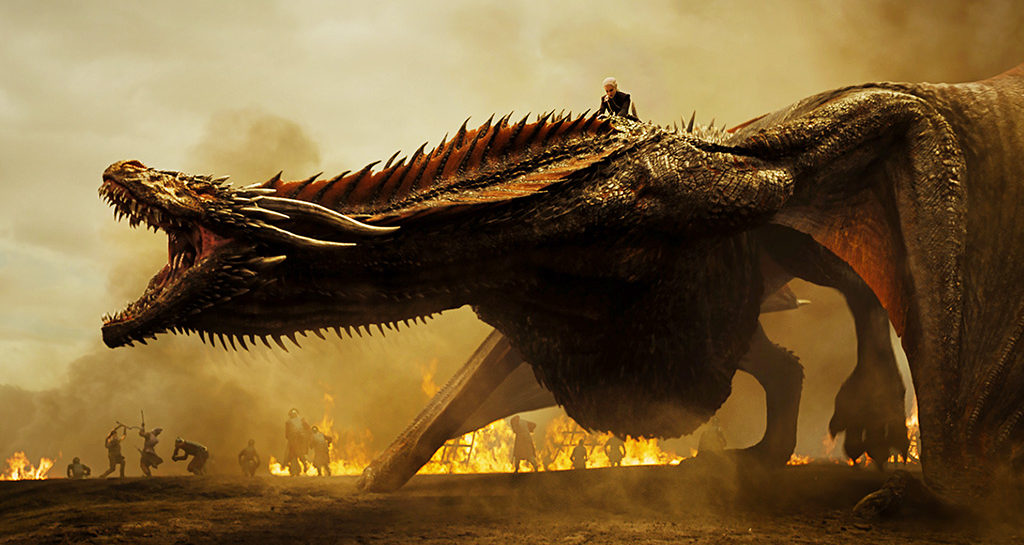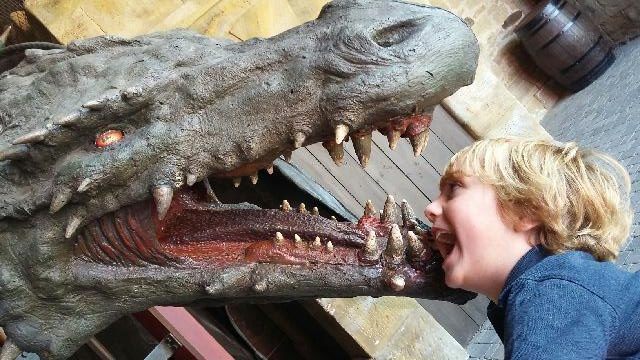
It seems a little churlish to criticise a programme for how realistic it’s dragons are, and yet here we are…
First of all let me say that I love Game of Thrones. It’s dramatic, exciting and funny and the whole production is so good that I’ve even forgiven them for the under-use of the Sand Snakes. It also has something to offer those of us who are interested in teaching. I’ve used it as a basis for some of my Forensic Medicine lectures to explore the effects of trauma on the skeleton. And at the moment, I’m enjoying the discussion by archaeologists of the cave art seen in the episode ‘The Spoils of War‘. And lets not forget the maths teacher who got his class to behave by threatening to reveal who died in the books…
But the dragons is where the story crosses over with my research, and so I feel that I’m allowed (expected!) to comment. In recent episodes we finally got to see a dragon go, well, full dragon. People got torched, carriages got blown up, and smoldering carnage lay strewn across the battlefield. It’s all good fun, but following this and previous scenes in GoT featuring the dragons and also following other films containing dragons (such as the Harry Potter entry, ‘Goblet of Fire‘) people have asked me just what would happen to a body if a dragon attacked.

Previously I’ve just been super-vague about it all, what with it all being made up. But now we have actual evidence! By which I mean fire-breathing action on the telly. I’m not a magizoologist, so can’t comment on the dragon’s anatomy, but in terms of the fire bit, here’s my main thought: B+ could do better…
The main issue for me is that the fire seems to do different things to people at different times in these episodes. Sometimes it makes people wander around on fire, sometimes it obliterates them to skeletons. The body is actually quite resistant to fire, and certainly it can take a while for the tissues to be significantly damaged by the burning. Personally I don’t like to think of these changes as destruction. This implies that the burned tissues have nothing to tell us, which is wrong. Transformation is a better term – pretty much all of the anthropological and biographical information that you can get from you and me, you can get from burned remains. It’s just harder to access. Interesting stuff, but I’m pretty sure that the Lannisters aren’t too interested in a forensic operation following this fiery battle…
Work by the American forensic anthropologist Dr Steve Symes has shown that it is possible to use heat-induced changes to map which parts of the body were burned first and then examine how that spread across the rest. This is very useful when examining forensic cases, since such spatial relationships are important. Arguably less so when a gigantic dragon is flying around – cause of death is relatively straightforward there… Recent research by my own team here at Teesside has demonstrated that the soft tissues act as a buffer to the skeleton at low temperature, but as a fuel at higher temperatures. In GoT we are dealing with the latter, so would expect the soft tissues to intensify the burning process.
Interestingly, in the aftermath of the fighting we see several burned skeletons on the battlefield – despite the heat of the fire, we know that burning (even at high temperatures) does not cause a body to turn into ash. Even in modern crematoria, burned skeletons are still largely intact and require additional processing (using a cremulator) to convert them into the powder that families receive. Unfortunately this good work on scientific accuracy is undone when Jaime blows on one body and watches it turn to dust. In actual fact, as bone is burned at higher intensities it become weaker as porosity increases, but then becomes very strong as the inorganic crystal structure starts to changes. Bone crystals coalesce, pores are filled and the microscopic structure becomes better ordered. Bones burned at high temperatures are actually more like ceramic – and can’t be blown apart, no matter how artistic it may look on screen.
For the pedant in me, it only gets worse. The burned skeletons were see here are brown. Bone can take on a brownish colour when burned, but only at lower temperatures. As the organic material (remember that bone is 30% organic and 70% inorganic) is lost, the bone becomes increasingly white. Some people use this relationship between heat and colour as a means of predicting the temperature of the fire, but it’s actually more complicated than that since the loss of the organic component is also dependent on amount of soft tissue present, duration of burning, oxygen levels, and so on – so not just temperature. Further, many of the victims that were effectively skeletalised were still in their armour. This makes for a powerful image, but again is unlikely. The high and consistent temperatures needed to burn away all evidence of the soft tissues would also affect the armour and clothing surrounding it.
So what can explain this mis-match of burning damage to the body? Well, there are two possible conclusions: 1) the tantilising thought that the dragons can intentionally vary the temperature of their fire; or, 2) that the show-runners have inexplicably not read my papers on heat-induced change…